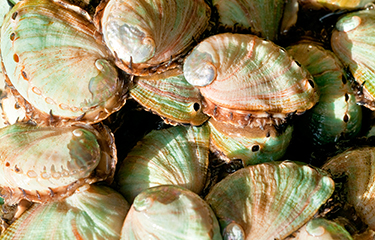Just a few years after Mexican abalone fishing cooperatives in Baja California voluntarily established marine protected areas, disaster struck.
A massive mortality event in 2009 and 2010 wracked the abalone fishing industry, which saw losses of biomass of up to 75 percent in some areas. Though scientists were initially unsure of the cause, they later attributed it to hypoxia, or oxygen deprivation.
In the ensuing years, scientists watched as abalone populations in marine reserves recovered quicker than in other areas subject to fishing pressure. They saw that while reserves didn't necessarily prevent the initial mortality, they did aid in the recovery.
"We found the larvae production was higher in reserves than in other areas," Stanford Professor of Biological Sciences Fiorenza Micheli told SeafoodSource.
The saga offers a lesson for both the abalone cooperatives and fishing communities around the world, according to Micheli, who is co-director of Stanford’s Center for Ocean Solutions and has worked with fishing communities in Baja for 15 years. Fisheries today face growing threats as oceanic conditions shift: Climate change, acidification, hypoxia, and others. Marine reserves might provide a buffer, allowing fish populations a place to weather disturbances, ensuring fisheries can continue to thrive.
"There's an indication that they can actually come back there. There's suitable habitat. There's good recruitment," Micheli said. But reserves have to be designated in areas that can actually support desired marine species. "There is a temptation to put reserves in the worst possible places that no one needs."
In Baja, challenging ocean conditions have persisted for the last decade, with sharp swings between extremely cold and extremely warm years, plus prolonged harmful algal blooms. Though Micheli's data only goes back a decade, other data collected by water agencies in nearby Southern California suggest that the hypoxic conditions – which caused that big die-off in 2009 and 2010 – are new, and the worst conditions observed over the last 70 years. Climate model projections suggest that conditions will continue to deteriorate.
Micheli and other scientists are monitoring oceanographic conditions to help cooperatives and managers make better decisions, such as where to establish permanent marine protected areas, and where to attempt abalone restoration through outplanting the mollusks. They’re making the data they collect more accessible to fishermen, according to Alexandra Smith, who works in Micheli's lab at Stanford and has been leading the effort.
"We've heard stories from the fishing cooperatives of using the data from the oceanographic sensors to see what natural factors are driving mortality, and balance their own decisions about fishery management," Smith told SeafoodSource.
In one case, cooperative members observed that the water was cooling off later in the year, so they delayed the opening of the fishing season to give abalone time to recover, Smith said. In another case, the cooperative used the data to demonstrate to regulators that their fishing practices did not cause a mass mortality event.
The cooperatives are keen to encourage abalone growth, and many have small hatchery operations to sustain and supplement wild populations. Some are now trying to commercialize these aquaculture facilities, with grow-out happening in either land-based tanks or at sea, though none have fully commercialized yet.
To create additional habitat for abalone, one cooperative built an artificial pyramid-shaped structure to give abalone a place to grow. Hatchery-spawned green abalone are outplanted in these artificial reefs, which are closed to fishing, with mollusks recruited there spill over into fishing sites. The reefs are placed in areas with different oceanographic conditions, such as oxygen levels and temperature, and abalone growth and survival rates are being measured to see where they grow the best and the fastest.
"It's been really interesting to see the cooperatives act with enthusiasm at all these approaches, not just marine reserves," Smith said.
Decades ago, abalone were dense from California to Mexico, with a harvesting boom in in the middle of the 20th century. But in California, overharvesting led to serial depletion of different species of abalone in the 1960's, 1970's and 1980's.
"One stock after the other the pink, the green, the red, the white – there are seven species of abalone – started to be overharvested," Micheli said.
Fisheries were closed for different species of abalone starting the 1990's, and today only a small recreational fishery north of San Francisco remains. There, divers must harvest without using scuba gear. But even that fishery is now closed because or mortalities, Micheli said. In Southern California, divers recently released juvenile white abalone grown in captivity into the wild – part of a years-long effort to revive the endangered species in the region.
In Baja, the declines started later and were much less extreme. Harvests were high through the early 1990's, until declining populations resulted in regulations on the minimum size – ending the practice of shucking abalone immediately after harvest on the boat.
Today, rules limit the fishing season from March to July, govern minimum size-limits, and set maximum allowable quotas for each cooperative. Though regulators have established marine reserves for certain species regionwide, cooperatives can choose to make reserves more conservative, Micheli said. And that's what many have chosen to do – potentially giving the abalone safe-havens as ocean conditions threaten their abundance.
"It was completely voluntary and led by the communities," Micheli said. "This is a case where they decided to use this tool of reserves and they are basically leading the way."







